Three of four people in coastal Bangladesh reduced food consumption during the COVID-19 pandemic
A survey by non-profit Uttaran in May and December last year showed people in Asashuni upazila ate less, borrowed more and reduced healthcare expenditure. They came up with searing coping strategies to handle the fallout of the pandemic and Cyclone Amphan.

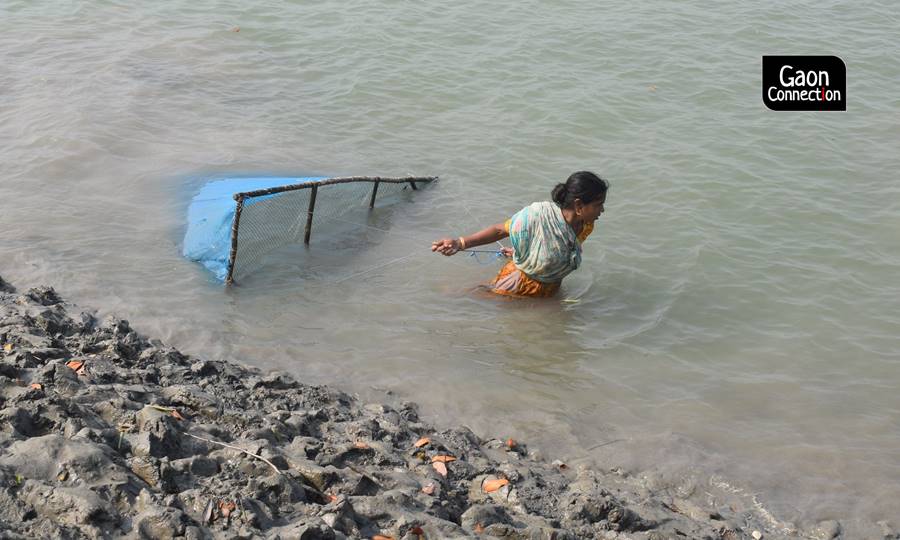
According to the study, in the last 10 years, 38.1 per cent of families have been displaced due to river erosion and 35.7 per cent due to cyclones, among others. All photo by Rafiqul Islam Montu
Asashuni, Bangladesh
What do people do when they are in the middle of the pandemic and their lives are tossed around by a cyclone? Among the first things they do is reduce food intake, found out non-profit Uttaran, which conducted two face-to-face surveys in May and December last year among 500 people in Asashuni upazila in coastal Bangladesh.
Almost three in four people (74 per cent) reduced their food intake in May. This shot up to a searing 100 per cent in December. Every single person surveyed in the upazila was learnt to survive with lesser food. Besides this, borrowing and begging rates went up from 45 per cent in May to 67 per cent in December.
Also Read: Is climate change impacting the reproductive health of women in coastal Bangladesh?
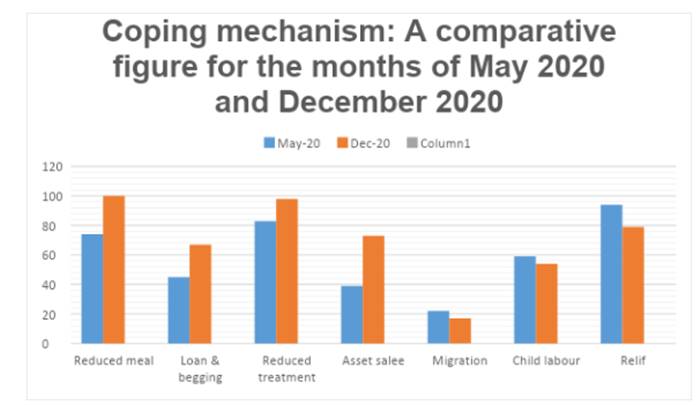
Uttaran found out that reducing food intake was among the seven coping strategies people had come up with. The others were borrowing and begging, reducing medical expenses, selling their assets, displacement, child labour and relief assistance.
Also Read: Ripple effect of COVID-19’s second wave in India being felt across the globe
The results varied drastically in some areas between May and December. In May, 83 per cent of respondents said they would reduce healthcare expenditure. By December, 98 per cent of respondents felt this way. The number was almost double when it came to the question of selling assets — from 39 per cent in May to 73 per cent in December.
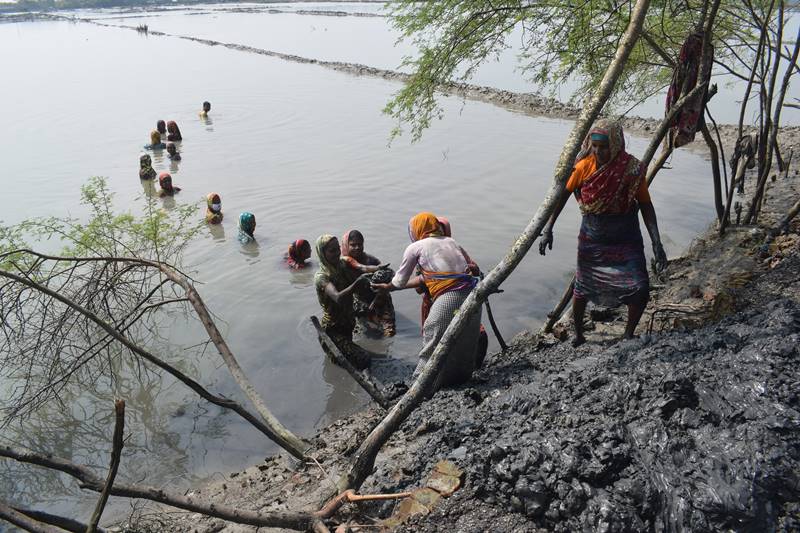
The year 2020 was one of learning for thousands of people living on the southwest coast in Bangladesh. First, the pandemic, and then Cyclone Amphan in May last year forced them to come up with desperate solutions to tackle the acute financial crisis.
Also Read: As the river swallows their land, villagers in Bangladesh turn environmental refugees
Despite support from the government and some non-profits, many ended up selling their assets. Some left their homes in search of a livelihood, while others borrowed from moneylenders. And, quite a few people began to eat less food. “We have nothing left. We can’t fall further. I now buy low-priced food. I’ve reduced the quantity I consume. I have sold the last three cows I had. I can’t do it anymore,” a dejected Babar Ali of Pratapnagar village told Gaon Connection.
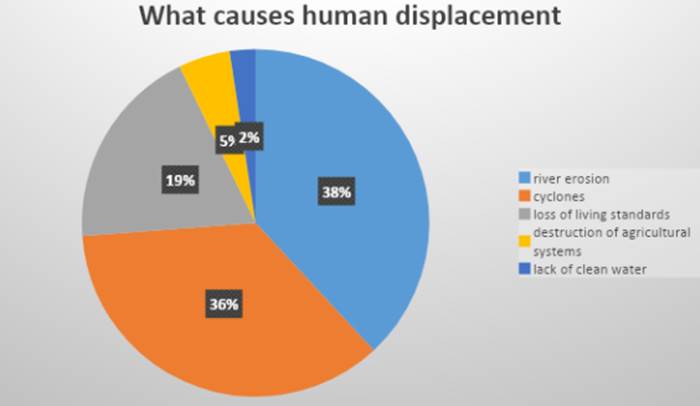
Jahin Shams, programme development expert at Uttaran, told Gaon Connection: “People in Assasuni upazila were forced to deal with repeated disasters. Help from the government and non-profits helped cover only a portion of their monthly expenditure. People had to resort to various negative coping mechanisms to survive. Their vulnerability increased.”
In some more weeks, the next cyclone season will begin and people have “no other coping mechanism to fall back on,” Shams pointed out. The agency of the lower middle class and middle class has also been exhausted.
Debt trap
Forty-five-year-old Ali has been living in Asashuni upazila of Satkhira district for a long time. He used to trade in rice for 22 years at Taltola Bazaar in Pratapnagar union. Customers owe him about five lakh taka (Rs 4,27,000), because they don’t have repaying capacity. He now ferries various products to distant villages to earn a living.
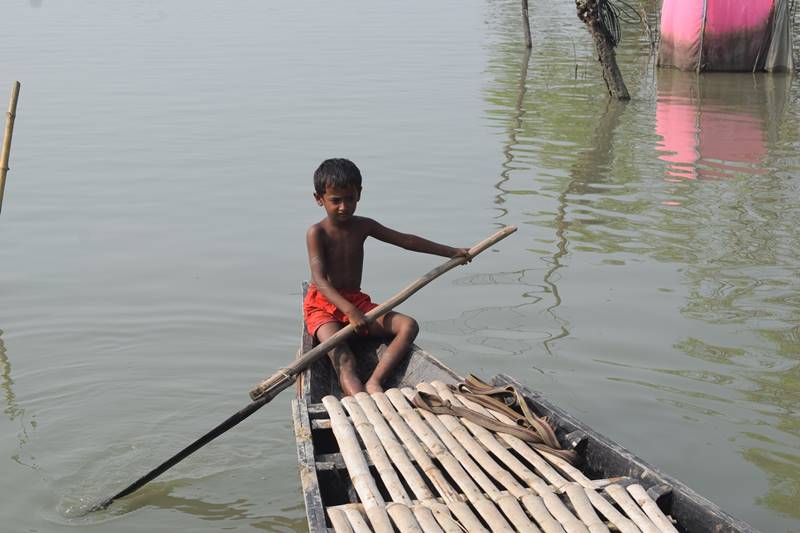
“My family usually spends six to seven thousand taka [between Rs five and six thousand rupees] every month. I could not eat three meals during the crisis. I went hungry some days. I stretched money by buying low-quality rice. Still, I’ve accumulated a debt of two lakh taka [Rs 1,70,000],” Beauty Begum, wife of Abdul Malek, who returned from Qatar during the pandemic with just 7,000 taka (Rs 6,064), told Gaon Connection. Their house was extensively damaged during Cyclone Amphan.
The entire world suffered the effects of COVID-19 and the lockdown, but Bangladesh’s south-west coast had an especially difficult time. People working in the big cities made a beeline for home, without a job, and that was when Cyclone Amphan hit the area with great force.
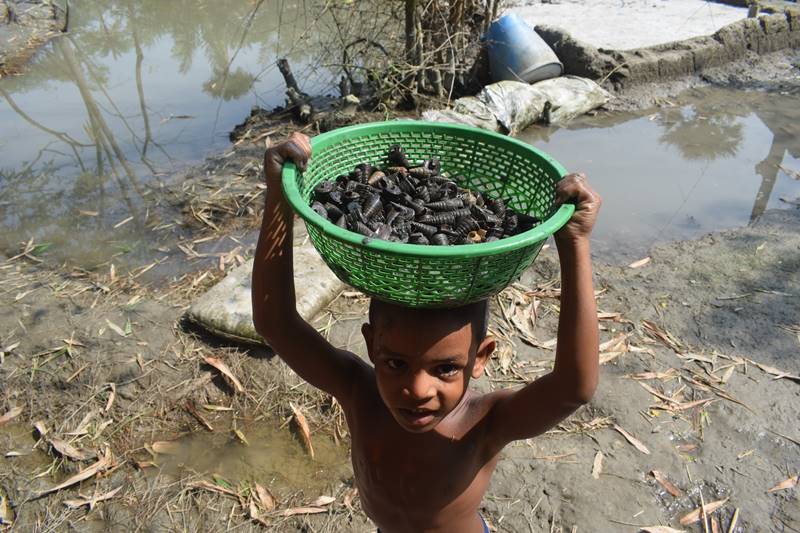
Kartik Mandal of Hajatkhali village in Khulna district, used to work as a labourer in Khulna town. He returned home in May. Amphan swept away his home. “I now live on the embankment with my family. I work as a day labourer. It is becoming difficult to provide food thrice a day. I don’t know how long I’ll be able to survive this way,” the 35-year-old told Gaon Connection.
From shrimp farmers to boatmen
Asashuni upazila was amongst the worst hit by Amphan. Shrimp farmer Nur Islam of Kurikahunia village in Pratapnagar union of the upazila is now making a living by ferrying a boat. The last resource he has left are the cows — he can sell them and pay the lease on the shrimp farm. He cannot cultivate shrimp anymore as the farm is submerged.
Like Islam, many former shrimp farmers have taken up other jobs — some drive boats, some go from home to home in the village selling goods, while others have joined as daily labourers.
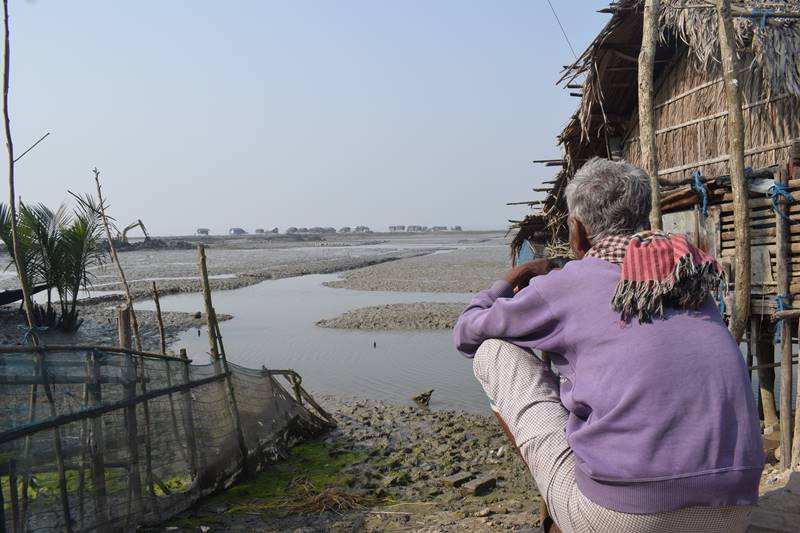
Mafuar Rahman, 35, of the same village farmed shrimp on three bighas (one acre) of land. The farm is still underwater. His home was also flooded. No farmer in Pratapnagar union has been able to prepare for shrimp farming this year.
Many people’s earnings have come down to 20 or 30 taka (Rs 17 to Rs 25) a day. They compensate by catching crabs, fishing or working for others. Some, like Akbar Hossain Lashkar, sold their vehicle at a fraction of its value, to keep hunger at bay. Every shrimp farmer has taken a loss of at least 3 lakh taka (Rs 2,59,713).
What is needed are immediate recovery and rehabilitation measures, among with construction of climate-proof and nature-friendly embankments, Shams added.
Healthcare suffers
Meanwhile, another study said health has taken the backseat in the everyday fight to survive. “If you need to go to the doctor for an emergency, you have to take a loan again,” said a research paper titled Climate Change Impacts and Adaptations on the Health of Internally Displaced People (IDPs): An Exploratory Study on Coastal Areas of Bangladesh, published in November last year in the Netherlands-based journal Helion.
The eight-month study had 420 displaced families in Koira and Batiaghata as respondents. According to the study, in the last 10 years, 38.1 per cent of families have been displaced due to river erosion and 35.7 per cent due to cyclones, among others.
Mohammad Mahmodul Hasan, coordinator of the voluntary organisation Christian Commission for Development, said people’s response strategies could reduce pain, but not end it. “Integrated, sustainable and effective recovery methods are almost missing at the community level,” he told Gaon Connection.
Sustainable livelihoods
M Zakir Hossain Khan, a climate finance analyst at Transparency International, Bangladesh, said information and evidence-based climate tolerance planning needs to be developed. “Plans should be for each area or community. Sustainable embankments need to be built. Care should be taken so that there is no waste or corruption,” he said.
Also, innovative systems were needed to make young people the main drivers of local development, Khan added. In addition to providing training in technology and service-oriented professions, young people need to be trained to become environmentally friendly entrepreneurs, Khan said.
Mohan Kumar Mandal, executive director of Leaders, a non-profit working in Bangladesh’s west coast, told Gaon Connection: “We have noticed that people in the troubled west coast are struggling to survive, but with their own coping mechanisms. The people of this area have preparedness for disaster. They adopt various survival strategies, including growing vegetables in less-saline areas.”
This story was produced with the support of Internews’ Earth Journalism Network.

